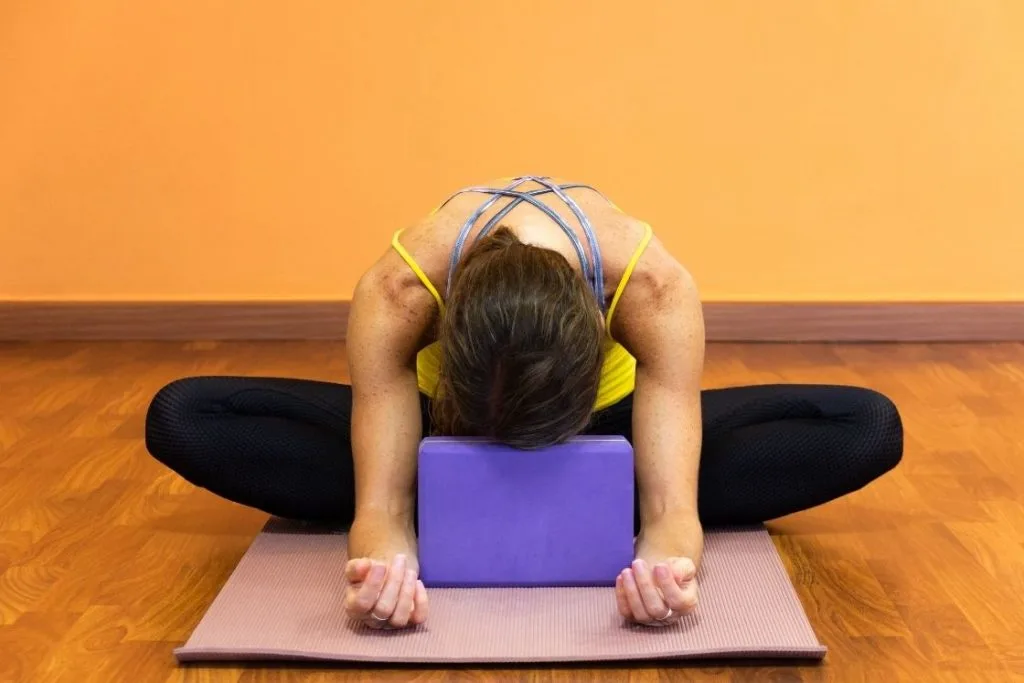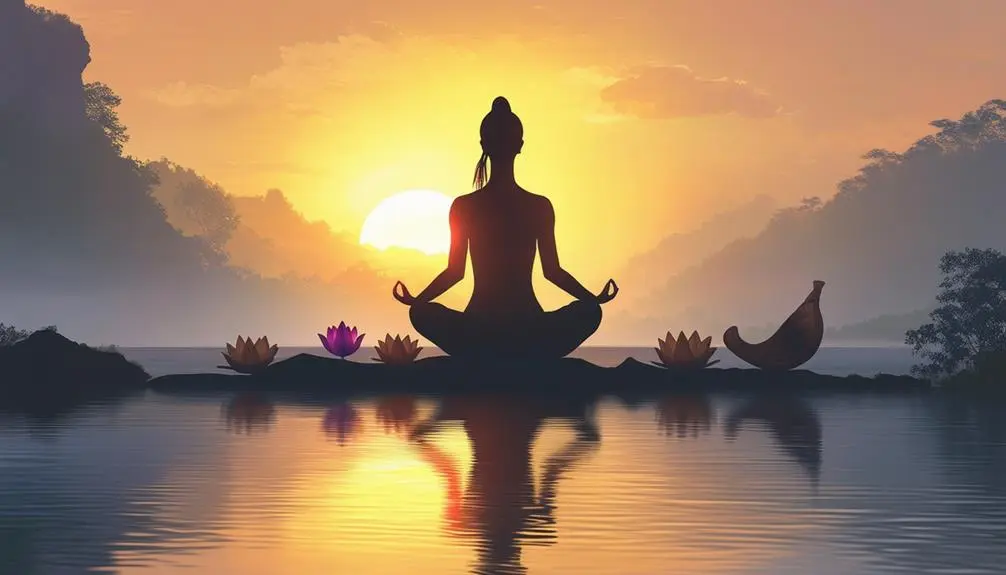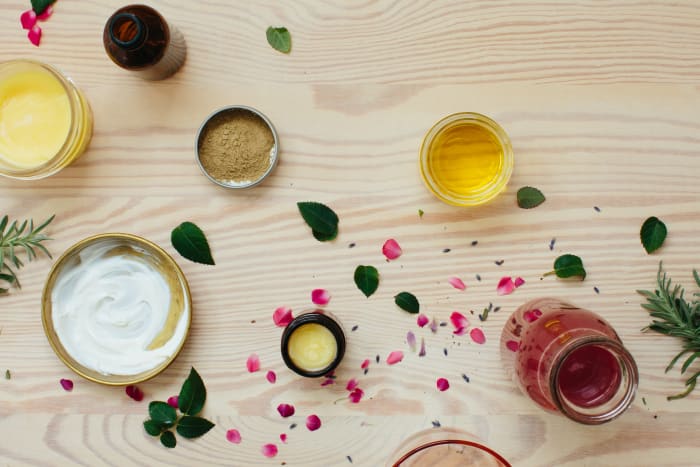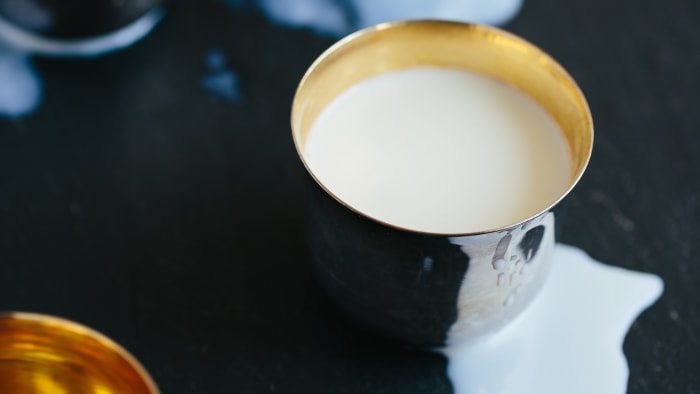In Ayurveda, the key to glowing from within is balancing three mind-body energies: ojas, tejas, and prana. These exist in all of us in a mutually beneficial relationship that sustains long-term health. Their preservation is a fountain of youth. Healthy prana (life force) and tejas (a healthy physical glow) yield ojas (internal nourishment from). Finding balance among the three is the key to longevity. Below we break down each of these elements, and offer practices that can help you reclaim your energy and joy.
Prana
Prana is the energy of life. Because, like air, it is characterized by movement, prana is considered the subtle counterpart of vata—the air element we all carry in some measure. They work in tandem. This energy circulates around the body, carried by the currents of vata and governed by the movements of your attention. In cases of vata imbalance, the circulation of life energy can be compromised. In busy day-to-day life, it is very easy to lose touch with the movements of life energy and attention. A slow and steady commitment to paying attention to self-care and self-love pays off in the prana bank.
For optimal health, prana and its smooth circulation must be cultivated with care. Moderate exercise, high-quality food, enough rest, good company, and self-love all build life energy. Mental afflictions, such as stress and worry, may be the biggest drain on life energy.
A break in prana’s rhythmic circulation can be physical, such as cholesterol blocking an artery or gas stuck in the intestines. However, psychic causes—chronic stress, worry, grief, or a general disconnect from the physical body (all computer, no exercise)—may be as important as physical causes in the modern progression of diseases.
See also How to Access Prana and Let Your Light Shine
Prana and the Senses
An important part of the subtle body, the five senses are a major player in stress, important enough to earn them a ranking as one of the three causal factors of disease.
Eyeballs and earlobes may seem physical, but without prana, they are inert, and this, along with their intimate connection to mind, is why they are considered part of the subtle body. The survival instinct of the senses to be on alert to protect us and our young from dangers such as tigers and forest fires carries over into the present day. Survival instincts now are addressing ever more subtle causes, like financial strain and kids finding their way in the world. This persistent pull of the mental attention outward by the senses causes constant stimulation of the nervous system. If this natural outward movement of energy is not balanced by quiet time, heightened levels of stimulation result in stress and energy deficiency.
See also Find Stillness
Daily self-care practices address this phenomenon and preserve prana by nourishing and protecting the senses. A healthy daily regimen will result in less stress and more energy. The channel of prana that begins at the nostrils and ends at the heart has a close relationship to respiration. Breathing is a life-giving activity and not to be ignored. Bringing the attention to the breath, at the heart of many yoga and meditation techniques, quiets the senses and the mind and nourishes the heart, the seat of prana. Rhythmic breathing is considered a vata-balancing therapy, and it can be as simple as the following breathing practice.
Practice: Sama Vrtti Ujaayi (Equal Breathing Practice)
Sama means “balanced,” vrtti means “fluctuation,” and ujaayi means “victorious.” This breathing exercise makes one victorious over the fluctuations of the mind. It is accomplished by equalizing the fluctuations in the breath.
- Sit comfortably, where you won’t be disturbed, and set a timer for 5 minutes.
- Close your eyes and take three breaths, just to settle in.
- Begin to inhale and count from one to four as you go, landing on the end of the inhalation at four.
- Begin to exhale and count slowly from one to four, completely emptying the breath at four.
Continue like this, counting rhythmically to four on each in- and out-breath. Concentrate on making them the same length and strength. This may take some practice. You may find that inhaling is easy and exhaling is hard, or vice versa. The counting is there to help you keep the rhythm. Stick with it, pay attention, and keep going until the timer goes off. Over time, you can increase your practice time incrementally, if you like. The more minutes you spend breathing in rhythm, the more stable and relaxed you will feel and the longer that feeling will stay with you.
See also How to Practice Sama Vritti Pranayama (Box Breathing)
Tejas
When you are on your self-care game and friends tell you you’re “glowing,” it’s tejas at work. Think of tejas as the smoldering embers of fire that continue to emanate a gentle and sustainable source of energy once the fire has settled down. Tejas is the subtle aspect of balanced pitta dosha, or the part of your constitution that is fiery, that governs the metabolism of food and information, and provides luster, luminosity, and brilliance to both body and intellect. Tejas brings a shiny glow to the skin, a sparkle to the eyes, and a sharp, clear mind. Tejas is responsible for a clear perception of the world around us, called sattva. In a balanced state, it burns through delusion and mental fog to reveal the true self.
See also Quiz: What's Your Dosha?
Practice: Retreat
Tejas is promoted by the intake of clean-burning fuel (nutritious food prepared with love), maintenance of a strong digestive fire, and the necessary time and space for the mind to process experience and emotion. Too much intake, the wrong kind of intake, or lack of energy and attention for transformation all compromise the body’s luster. This is why retreats result in the glow; adequate rest and time for self-care and reflection are at the forefront of any retreat. A steady commitment to daily routine keeps the embers burning bright by keeping us in the habit of paying attention to wellness and carving out time to do what it takes to process daily living in the moment rather than playing catch-up all the time. Too much too fast, like wood on a fire, will overwhelm tejas, leading to a cloudy complexion and perception.
Ojas
Paying attention to healthy diet and routines and having a keen awareness of energy levels in both your body and your mind will result in high ojas. Unlike prana and tejas, ojas is a substance. Like cream as the essence of milk, ojas is the end product of digestion, produced once all the dhatus are nourished, and is the stuff of vitality and immunity. Charaka Samhita calls ojas “the nutrient cream of the body” and “that which keeps all the living beings refreshed.” Like honey, ojas is the nectar of nutrition, and it takes volumes of food and days of digesting to produce a small amount.
During the process of digestion and metabolism, a small amount of ojas is released into each tissue layer before the remaining nutrition is passed on to the next layer. This provides immunity and strength for each tissue. The refined end product, which takes 30 days to produce from food, results in ojas for the vitality and longevity of the entire body.
See also Foster Your Inner Glow with Ayurveda
Burning ojas by overdoing it on a regular basis, or by subsisting on poorly digested food or not enough building food, shortens the life span. It takes one month of rejuvenation to make up for burning the candle at both ends. Keep in mind, you have to live large for a while to burn it up completely. Getting enough rest and rejuvenation time regularly is the way to promote strong immunity and true vigor. When you start to feel a decline in natural energy, take a rest to preserve ojas rather than pushing ahead all the time.
Practice: Ojas Milk
Dates, almonds, and cow’s milk are prized substances because they contain a mixture of qualities that ultimately provide nutrition to build ojas (as long as they are digested well). These foods are commonly blended into a warm smoothie of sorts, called ojas milk.
Adapted from The Everyday Ayurveda Guide to Self-Care by Kate O’Donnell © 2020 by Kate O’Donnell. Photographs by Cara Brostrom. Reprinted in arrangement with Shambhala Publications, Inc.










